

Agridisk
Egypt - Alexandria
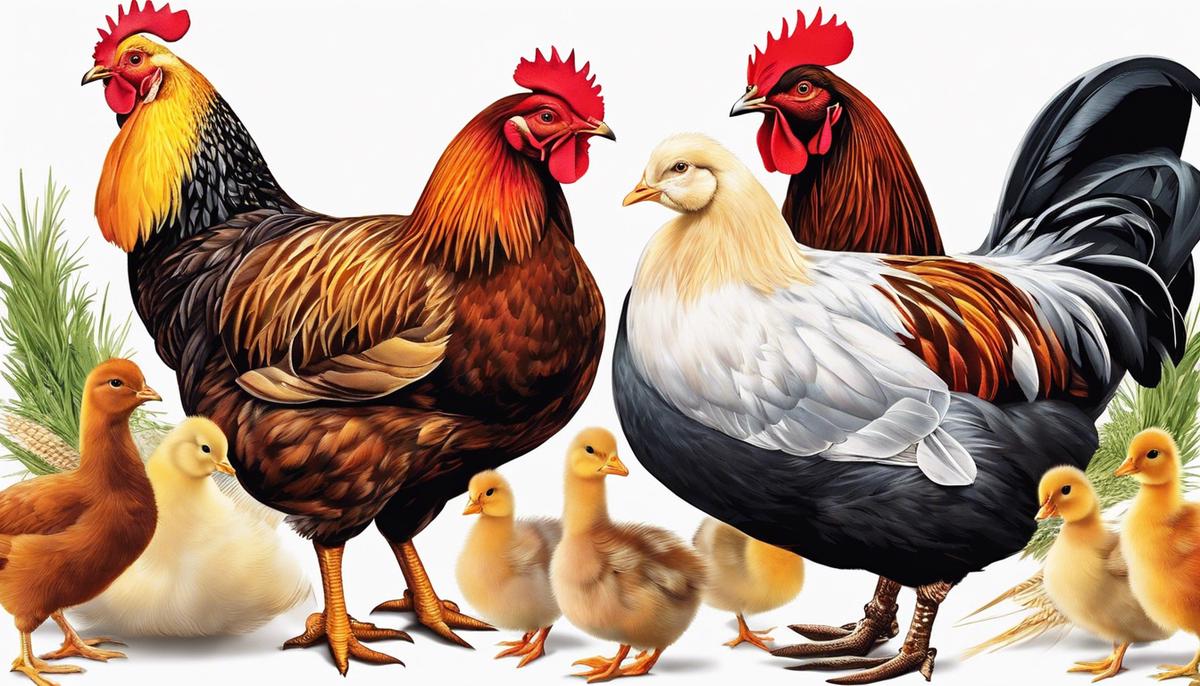
Poultry raising | Introduction | poultry farming business plan
Description: The fascinating world of poultry is one that offers a wide array of species each with its distinct characteristics and requirements. A successful leap into poultry raising starts with a comprehensive understanding of these varying factors, as they dictate the right choice for individuals depending on their resources, goals, and space. Similarly crucial is knowing how to create an optimal living environment for the poultry, starting with a properly designed coop, the setting of effective fencing, and catering to basic needs such as air, natural light, and fresh water. Equipping oneself with essential knowledge about poultry health, nutrition, common diseases, vaccination requirements, and preventive healthcare measures is also paramount. Such a holistic approach to poultry raising can result in a fruitful endeavor that is both fulfilling and economically rewarding. If you're a beginner to the wonderful world of raising poultry, you're in for a clucking good journey! But first things first, let's figure out which poultry breed is right for you. Choosing the right breed of poultry can be a little daunting, especially considering there are hundreds of different species available. But breathe easy, because we're here to help simplify things. In reality, your choices boil down to four main species; chickens, ducks, geese, and turkeys. Now, let's hop right into the charming world of our feathered friends. Chickens are undoubtedly the most popular choice for beginners. They’re small, easy to manage, and truly charming. Plus, who can resist those delightful and delicious fresh eggs in the morning? Our top picks for beginner-friendly chicken breeds would be the Rhode Island Reds and the Sussex. Both these breeds are hardy, lay plentiful eggs, and have generally calm and friendly demeanors. And for those who are more interested in showy aesthetics, the Silkie breed might be one to consider with its fluffy plumage and sweet nature. Ducks might not be your first thought when considering poultry, but they can be a wonderful addition to your family flock. These delightful birds have plucky personalities and can also offer fresh eggs. The Pekin breed, known for their gleaming white feathers, is immensely popular among beginners. They're calm, sociable, and great egg layers. For those seeking a splash of color, Mallard ducks might be more suitable with their iconic green head and white collar. Geese are incredibly intelligent, protective of their flock, and can be surprisingly affectionate. They might not have the same egg-laying prowess as ducks or chickens, but they offer loads of personality. The Toulouse breed is a great starter goose. They are friendly, quiet, and can adapt to a wide range of environments. Embden geese are also increasingly becoming popular, known for their stand-out white feathers and determined nature. Often overlooked, turkeys offer a unique poultry experience. While they require more space than chickens or ducks, they are self-reliant and independent. The Broad Breasted White breed is hardy, friendly, and grows rapidly which makes it a well-suited turkey breed for beginners. Though there are so many more species and breeds worth mentioning, these are the most beginner-friendly choices for each main poultry species. Remember, do your homework and consider your space, time, and resources before taking the leap. Embrace the joy and responsibility that comes with caring for these feathered friends. Get ready to embark on an exciting journey of poultry parenthood! Remember, every poultry adventure begins with making the right choice for your family flock. So, choose wisely, learn along the way, and most importantly, enjoy this clucking good journey! Moving along with our poultry journey, let's dive right into our next critical chapter, creating safe and soothing housing accommodations for your feathered friends. You've picked your preferred species, you've settled on your starter breed, so what's next you ask? Well, now you get to play architect and create their little poultry paradise! Housing is one of the most crucial elements to consider in poultry farming. This shelter not only protects your birds from predators and harsh weather conditions, but also provides a cozy nook for them to relax, roost, and in the case of our lovely laying hens, produce those nutritious eggs we all adore. Before we flap crazily in the coop construction, remember each poultry type has unique requirements, relating to factors such as space, ventilation, and nesting conditions. However, here are some general ground rules. There you have it, folks! Providing your poultry with a safe and comfortable housing environment doesn't have to be daunting with these best practices. Your poultry-raising journey is just taking off. Nestled in their snug, secure homes, your feathered pals are ready to flourish and regale you with their amusing antics, clucky conversations and fresh, delicious eggs. Creating this warm haven for them is just the kind of nurturing care they need to strut their stuff and peck their way into your hearts! After selecting your preferred poultry species and setting up the ideal home conditions, another important aspect when it comes to raising healthy and happy poultry is understanding nutritional requirements and common health problems. Let's dive into what your feathered friends need to thrive and how you can proactive in preventable health issues. The nutritional needs vary between different species of poultry; however, all species need a balanced diet that includes carbohydrates, proteins, fats, minerals, vitamins, and water. Carbohydrates, derived from grains in commercial feeds, will provide the energy poultry needs to grow, lay eggs, and regulate body temperature. Proteins and fats are crucial for growth, feather production, and egg development. Essential minerals such as calcium, primarily for eggshell development, and phosphorus are also vital. Vitamins A, D, E, and K are necessary to support metabolism and immune responses. Water serves as the medium for digestion and nutrient absorption. It is crucial to provide fresh and clean water to poultry at all times as they will consume two to three times more water than feed. When feeding poultry, a commercial poultry feed that matches the bird's age and production status, whether they are growing chicks, laying hens, or meat birds, offers required nutrients in the correct ratios. Supplementing with kitchen scraps or free-ranging can provide additional nutrients but should never make up more than 10% of the bird's daily intake to prevent imbalances. Understanding common health problems and their prevention is just as important as providing proper nutrition. Most poultry health problems can be prevented through best management practices. Parasites are a common issue in poultry. Regular checks for external parasites such as mites or lice, and internal ones like intestinal worms are key. Overcrowding, poor hygiene, and damp litter provide the perfect condition for these pests. Regular cleaning alongside using approved medications will control such health problems. Another common issue is respiratory diseases. Ventilation is crucial in the coop to prevent dust and ammonia accumulation, which can induce respiratory issues. Avian influenza is potentially devastating but can be circumvented with strict biosecurity measures: Avoid introducing new birds from untrusted sources, quarantine new additions, and limit wild bird contact. Nutrient deficiencies can lead to various health complications like weak shells or skeletal issues. Ensuring the right balance of nutrients in feed can prevent these problems. In conclusion, whether you are new in the poultry world or an experienced keeper, understanding these elements will lead to a healthier, happier flock. Thus, it ensures the joy of poultry-raising for years to come. Happy Homesteading! With a grasp of the diverse poultry species, understanding of their individual needs, knowledge on how to construct and maintain a suitable habitat, and information about crucial aspects of poultry health and nutrition, anyone can kickstart a successful poultry raising venture. These essentials, when put into practice, not only ensure the well-being and productivity of your birds, but also make the journey of poultry raising more manageable and enjoyable. So, whether you are considering poultry raising for a business, for self-sustainability, or as a hobby, the information offered herein can serve as your basic guide toward achieving your goals. With growing consumer interest in the food industry and significant leaps in agricultural advancement, entrepreneurial exploration in the business of poultry farming has never been more compelling or lucrative. Whether it be on a local or international scale, understanding the ins and outs of the poultry industry is key to launching a successful business within this sector. This includes an awareness of current market trends, as well as a deep understanding of the demand and supply dynamics. Crucially, the development of a strategic business plan, encompassing all aspects from operations and marketing to finance is imperative. Furthermore, adherence to and comprehension of the necessary legal requirements, permits, licenses and regulations cannot be overlooked in this endeavor. With the global populace skyrocketing and urban areas sprawling, the need for consistent, sustainable protein sources stands at an all-time high. One industry at the forefront of satisfying this need is the poultry industry. It has become essential to closely monitor trends and nuances in this sector, unraveling a captivating blend of innovation, technological advancement, and enlightened business practices. Farming that incorporates technology is one of the biggest trends in poultry production. Drone technology and AI are offering poultry farmers unprecedented insights into flock health and productivity. Aided by machine learning algorithms, drones can detect diseases, distress, and even determine weight and growth rates of poultry with great accuracy. This not only optimizes productivity on the farm but also ensures higher quality chicken products for consumers, fostering trust and brand loyalty. The emergence of antibiotic-free and free-ranging chicken is yet another intriguing trend. With consumers growing more health-conscious and demanding greater transparency about the food they consume, an increasing number of producers favor relaxed, spacious environments for their poultry to flourish. Not only does this result in healthier, higher quality produce, but it also appeals to the increasing consumer population that prioritizes ethical and sustainable farming practices. In the same breath, vertical integration has been transforming the poultry industry. It is a business model where companies in the same supply chain are consolidated under a single entity. It allows for cost-effectiveness, quicker decision-making, enhanced product traceability, and influx of innovative solutions, making it a significant trend to watch. One other game changer - the rise of plant-based and lab-grown alternatives for poultry products. With more people adopting vegetarian and vegan diets, and concerns about the environmental impact of livestock farming, these alternatives are becoming highly attractive investments. Players in the poultry industry will need to keep abreast of this trend and perhaps consider producing these alternatives in order to stay ahead of the game. Last but not least, COVID-19 has, undoubtedly, left its mark on the poultry industry. Introduction of stringent hygiene protocols and safety measures are now the norm, and likely to remain so in the foreseeable future. In a surprising twist, the pandemic has also led to a resurgence in local and smaller-scale farming, as consumers favor local produce to safeguard against supply chain disruptions. The poultry industry stands at the cusp of noteworthy growth, poised to leverage these trends for maximum returns. Those who adapt, innovate and remain flexible in the face of these changes will undoubtedly pave the way forward, cultivating an industry that’s thriving, sustainable and in sync with consumer values and demands. Stay tuned – and stay engaged – as we navigate these trends and boldly stride into the future of poultry production. Despite the rise in plant-based and lab-grown alternatives for poultry products, the demand for chicken and other poultry products still form a substantial slice of the global food industry. The COVID-19 pandemic has further impacted this industry's landscape, fueling a resurgence in local and smaller-scale farming, and emphasizing the importance of stringent hygiene protocols and safety measures. As innovative as drone technology, AI, and vertical integration may be, a thorough and well-planned business strategy is crucial when choosing poultry farming as a field of entrepreneurship. Here's how you can craft a successful business strategy for a poultry farm. To sum this up, the success of a poultry farm rests on thorough market research, effective supply chain management, commitment to sustainability, and the cultivation of strong business relationships. In a world that is constantly evolving, businesses cannot afford to merely roll with the punches. They must learn to adapt, improve, and innovate. Look forward to fresh business strategies that will carry the poultry industry into a bright future. Now, that's smart farming! Diving into the legal and compliance side of starting a poultry farm is no small challenge, but with the right understanding and approach, it can be straightforward. This is a path paved with operational complexities, strict regulations, and sanitation guidelines. It's vital to understand the diverse range of responsibilities that come with owning and running a successful, law-abiding poultry operation, to various levels of government, the market, and indeed, to the birds themselves. There are numerous legal requirements to consider before delving into poultry farming. First, secure the necessary permits and licenses from your local government. These vary from place to place and often depend on the scale of your operation. You might require building permits for constructing farm structures, or an operational permit if you wish to sell poultry products commercially. Next is zoning laws. It is essential to determine whether your farm location (urban or rural) allows for poultry farming in its zoning codes. Legal consulting might prove beneficial to avoid any potential run-ins with land-use regulations. A critical consideration lies in adhering to the Animal Welfare Act. This federal law regulates the treatment of animals in research, transport, and exhibition. In a poultry setting, this requires adequate housing, nutrition, and medical attention for your animals. Overseeing animal welfare is, of course, not only ethical but also good business; healthy poultry leads to better products and higher returns. The environmental impact of poultry farming is pivotal, which gives rise to the need to comply with environmental regulations. Protecting water resources from contaminants, controlling air pollution, and managing waste effectively fall under the remit of the Environment Protection Agency (EPA). They offer farming-specific guidelines to ensure environmentally sound operations. Remember, eco-conscious operations often synchronize with cost-efficiency and include added benefits such as positive brand reputation and customer preference. That brings us to food safety - the paramount concern with poultry and poultry product consumers. Following the Hazard Analysis and Critical Control Point (HACCP) system, a part of the USDA’s Food Safety and Inspection Service, is obligatory for U.S poultry processors. Through this system, possible hazards in the food processing journey are identified and controlled to assure the safety of the food. Bear in mind that labeling your poultry products according to the USDA standards is another legal requisite. This includes declaring ingredients, handling instructions, and nutrition facts. When marketed correctly, it can also help define your brand to consumers, helping your products stand out on retail shelves. Finally, don’t forget about your labor laws. If you employ staff on your farm, you must adhere to federal and state labor laws, occupational safety and health standards, wage and hour standards, and insurance requirements. Starting a poultry farm is a promising and rewarding venture. Yet, it is lined with specific legalities and regulations that you must address to ensure the proper functioning and reputation of your business. As the saying goes, 'knowledge is power,' so equip yourself with the necessary insights, maintain diligence towards compliance, and pave the way for a successful poultry enterprise. Comprehending the intricacies of the poultry industry, crafting a well-rounded business plan, and staying on top of legal requirements are the cornerstones for establishing a successful poultry farming venture. In diving into this business, it is important to remember the specific contexts of your location and target market, as these will influence your strategy and operations. With the right knowledge, planning, and dedication, one can certainly make a thriving business within the poultry industry, thus contributing to an ever-growing, critical sector in our economy.Poultry raising
Understanding Poultry Species
Poultry Pro Tips: Choosing The Perfect Feathered Friend For Beginners

Adequate Housing and Environment
Feathering Your Nest: Safe and Comfortable Housing for Poultry
Whether you're raising majestic turkeys or dainty ducks, make sure that each bird has enough room to strut their stuff. Overcrowding can lead to health issues and behaviors such as cannibalism or pecking. As a loose guideline, each chicken requires 3-4 square feet inside the coop and an additional 10 square feet in the run, whereas geese and turkeys would appreciate a little more elbow room, nearly 6-10 square feet per bird.
Remember, birds need fresh air too! Adequate ventilation will keep away respiratory issues, humidity, overheating, and buildup of harmful gases. Install vents, preferably on all four sides of the coop at the highest point, and make sure they’re secure from predators.
Chickens love to roost off the ground whereas ducks are more ground dwellers. Ensure you have cozy perches for your chickens, and straw-filled nesting boxes for your ducks. And geese? Well, they aren’t picky and are happy as long as their housing is dry, ventilated and secure!
Your poultry are a delicious prospect for predators, so it's vital to have a secure setup. Use strong meshes, lockable doors, and predator-deterring hardware to protect your flock.
Birds, particularly laying hens, thrive with at least 14-16 hours of light a day. Natural light is always best, but during shorter days, you may need to install artificial lighting in your coops.
Poultry housing can become dirty quickly, leading to health problems. Design your coops with cleanability in mind. Sliding trays for droppings, removable roosts, and washable nesting boxes can be real game-changers.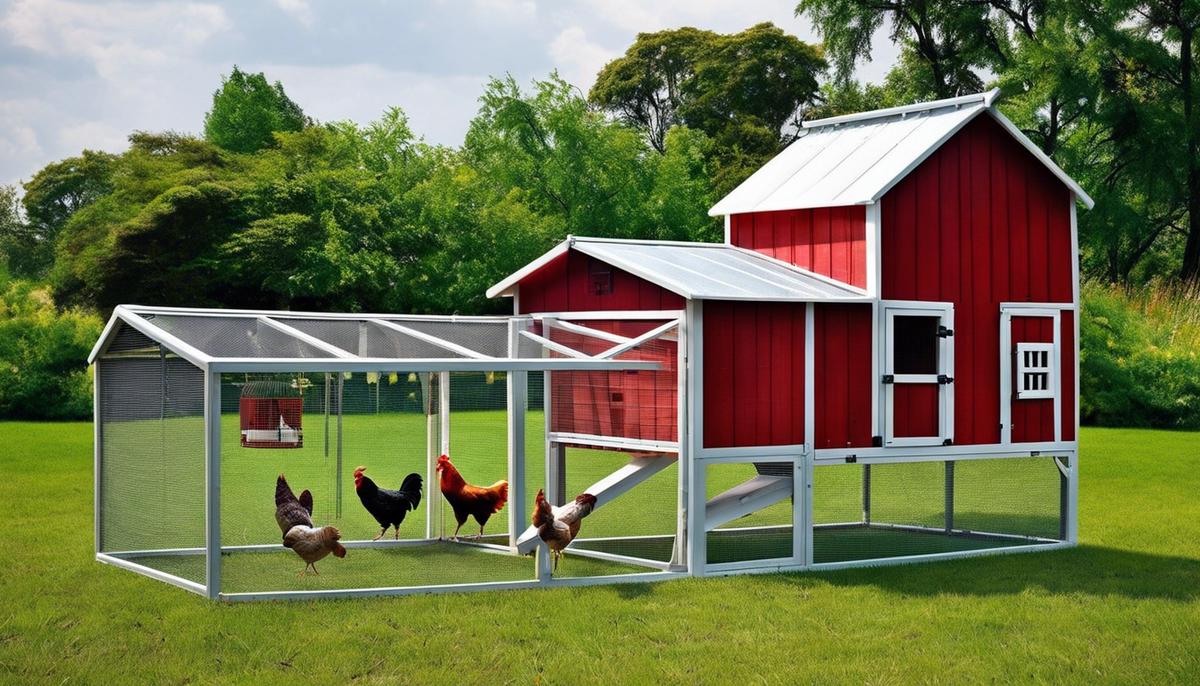
Poultry Nutrition and Health Care
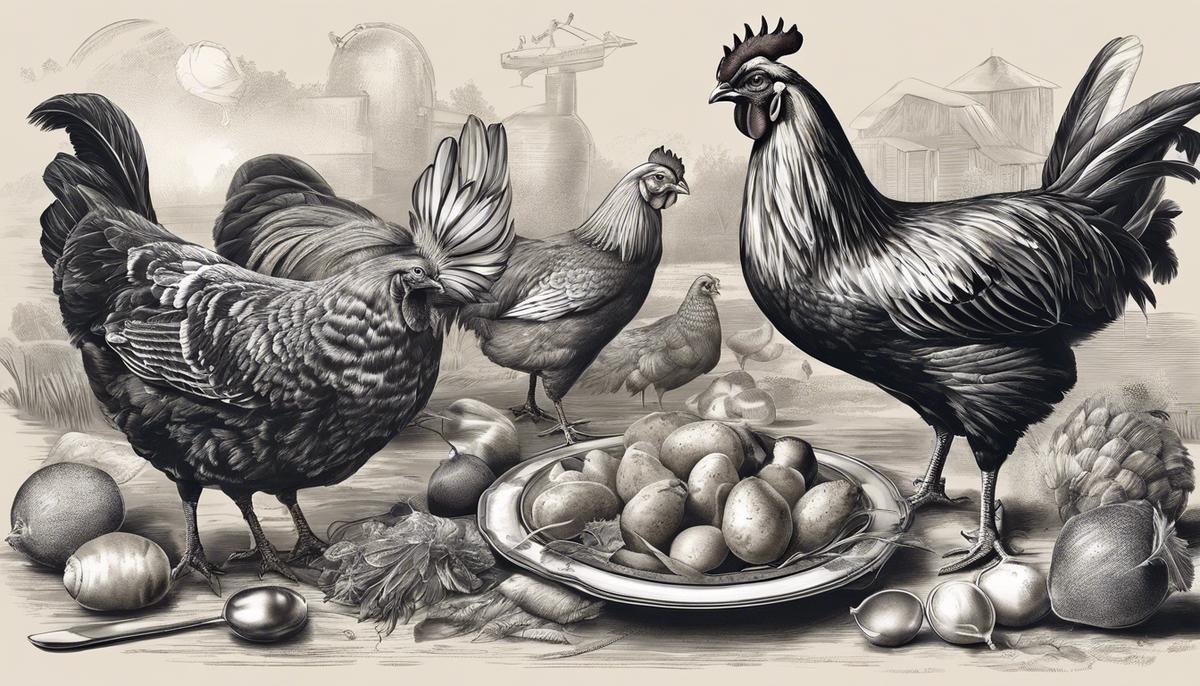
Poultry farming business plan
Understanding Poultry Industry
Harnessing the Future: Key Insights and Trends in the Poultry Industry
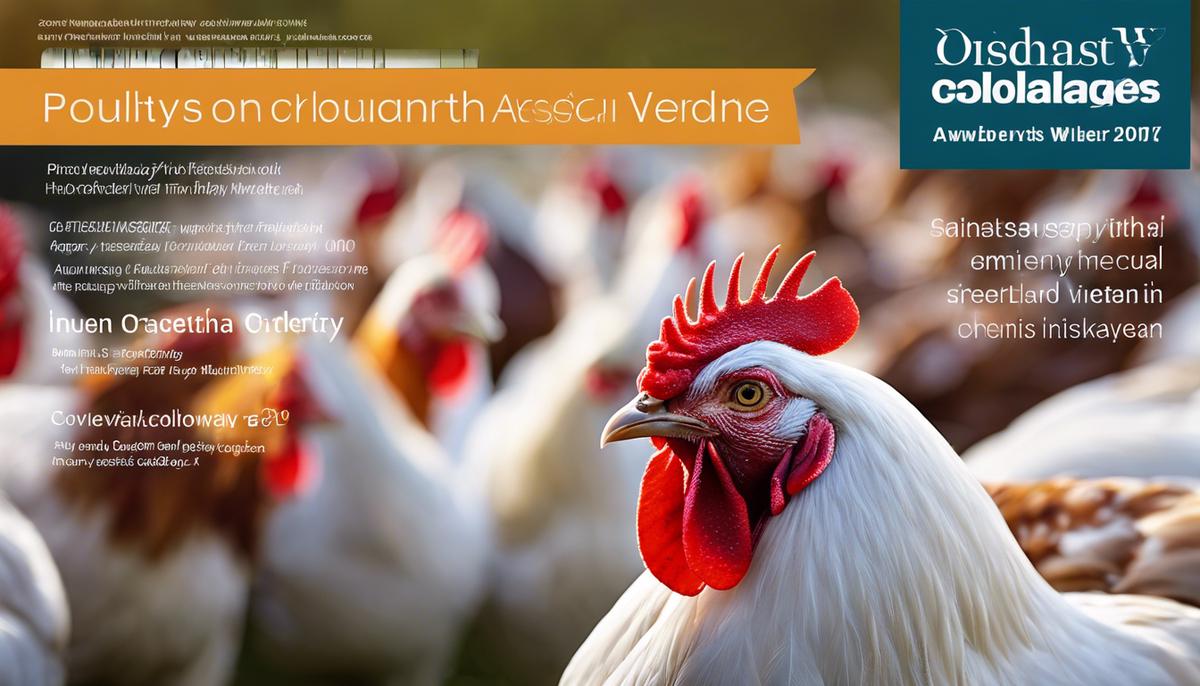
Business Planning and Strategy | poultry farming
Spearheading Success: Effective Business Strategies for Poultry Farming
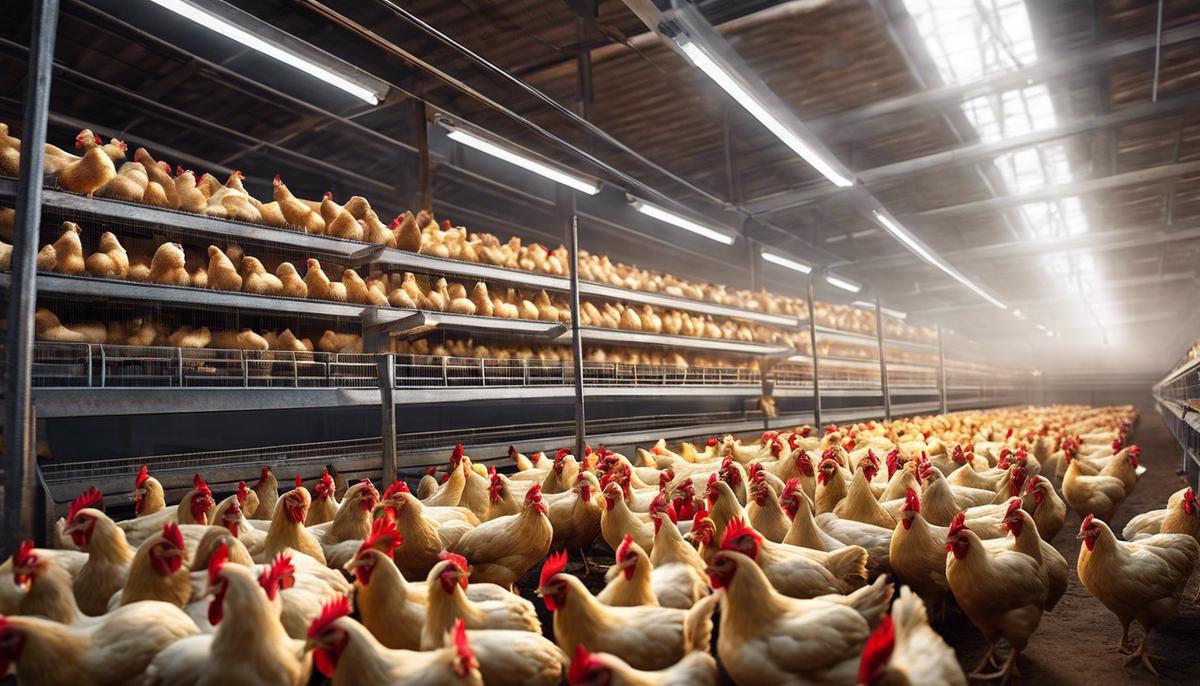
Understanding Legal and Compliance Requirements | Poultry raising
